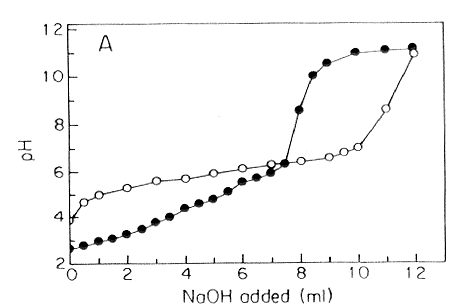A citrate buffer is an aqueous solution composed of a weak acid (citric acid) and its conjugate base (sodium citrate). It is sometimes called a citric acid buffer, sodium citrate buffer, or citric acid-sodium citrate buffer. Citric acid is a polyprotic acid with three pKa's at 3.13, 4.76, and 6.40. It has a buffering range between pH 3.0 to 6.2. (Dawson 2002, Nozawa 1995).
Heat-Induced Epitope (Antigen) Retrieval (HIER) techniques are a common application that uses a citrate buffer. These techniques help regain lost antigenicity that may occur in formalin-fixed paraffin-embedded (FFPE) tissue. During fixation, formalin and other aldehyde compounds are hypothesized to create protein crosslinks with antigenic sites in tissue specimens, resulting in conformational changes that mask these epitopes leading to poor downstream detection during fluorescence in situ hybridization (FISH) or immunohistochemistry (IHC). Applying HIER, which uses heat treatment in citrate buffer (0.01 - 0.1 M), aldehyde crosslinks formed during fixation are theorized to be reduced, restoring lost antigenicity and improving downstream detection and signal quality. (Krenacs 2010).
- Dawson, Rex Malcolm Chaplin, et al. Data for biochemical research. Vol. 3. Clarendon press, 2002.
- Krenacs, Laszlo, et al. "Heat-induced antigen retrieval for immunohistochemical reactions in routinely processed paraffin sections." Immunocytochemical Methods and Protocols. Humana Press, 2010. 103-119.
- Nozawa, S. R., et al. "Mind the buffering capacity of citric acid." Fungal Genetics Newsletter 42 (1995): 56.


| Catalog | Size | Price | Quantity |
|---|---|---|---|
| 10000 | 100 mL | Price |
| Solvent | Water |
| H-phrase | H303, H313, H333 |
| Hazard symbol | XN |
| Intended use | Research Use Only (RUO) |
| R-phrase | R20, R21, R22 |
| Storage | Refrigerated (2-8 °C) |
| Telephone | |
| Fax | |
| sales@aatbio.com | |
| International | See distributors |
| Bulk request | Inquire |
| Custom size | Inquire |
| Technical Support | Contact us |
| Request quotation | Request |
| Purchase order | Send to sales@aatbio.com |
| Shipping | Standard overnight for United States, inquire for international |
